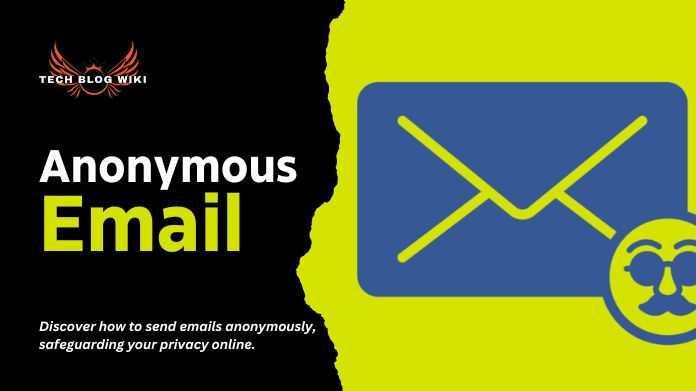Maintaining privacy and anonymity online is becoming increasingly important in today’s digital age. Whether you’re concerned about protecting your identity, communicating sensitive information, or maintaining confidentiality, sending emails anonymously can be valuable. Anonymous email services allow users to send emails without revealing their identity or personal information.
However, sending anonymous emails requires careful consideration and adherence to specific guidelines to ensure privacy and security. From choosing the exemplary anonymous email service to implementing additional security measures, there are several factors to consider when sending emails anonymously.
In this Techblogwiki guide, we will explore the concept of anonymous email, discuss the importance of anonymity in online communication, and provide step-by-step instructions on how to send emails anonymously.
Whether you’re a whistleblower, journalist, or activist or value your privacy, learning to send emails anonymously can empower you to communicate freely and securely online.
What is an Anonymous Email?

An email an anonymous is sent without revealing the sender’s identity or personal information. It allows individuals to communicate without disclosing their email address, name, or other identifying details. This can be useful for various reasons, including maintaining privacy, protecting confidentiality, or sending messages without fear of retaliation or harassment.
Email an anonymous services typically offer features such as masking the sender’s IP address, encrypting message content, and providing disposable or temporary email addresses. These services help users maintain anonymity and confidentiality while communicating online.
Anonymous emails are commonly used by whistleblowers, journalists, activists, and individuals who wish to share sensitive information without revealing their identity. However, using anonymous email services responsibly and ethically is essential, as they can be misused for malicious purposes.
How Do Anonymous Emails Work?
Email an anonymous work by obscuring the sender’s identity and personal information to protect their privacy and anonymity. Here’s how they typically work:
1. Masking Sender Information: Email an anonymous services hide the sender’s IP address, email address, and other identifying information associated with the email.
2. Encryption: Many anonymous email services encrypt the content of the email to ensure that it cannot be intercepted or read by unauthorized parties.
3. Disposable Email Addresses: Some services offer disposable or temporary email addresses that can be used for a single purpose or for a limited time before expiration.
4. Anonymizing Tools: Users may use anonymizing tools such as VPNs (Virtual Private Networks) or Tor (The Onion Router) to conceal their identity when sending emails.
5. Recipient Anonymity: In addition to protecting the sender’s identity, some anonymous email services also allow recipients to remain anonymous or pseudonymous, further enhancing privacy.
By employing these techniques, email an anonymous services enable users to communicate securely and privately without revealing their personal information. However, choosing reputable and trustworthy services is essential to ensure the confidentiality of communications.
How to Send an Anonymous Email?
Sending an email an anonymous involves using specialized email services or tools to conceal the sender’s identity. Here’s how to send an email an anonymous:
1. Choose an Anonymous Email Service: There are several anonymous email services available online, such as ProtonMail, Guerrilla Mail, and Tutanota. Select a service that aligns with your privacy and security requirements.
2. Access the Service: Visit the website of the chosen anonymous email service and create an account if necessary. Some services allow you to send anonymous emails without registration.
3. Compose Your Email: Once logged in, compose your email as you would with any regular email. Enter the recipient’s email address and write the subject and body of the email.
4. Avoid Personal Information: Be cautious not to include any personal information in the email content that could potentially identify you, including your name, address, or other identifying details.
5. Send the Email: After composing your email, use the anonymous email service’s interface to send the email. The recipient will receive the email without any information about the sender’s identity.
6. Optional: Use Anonymizing Tools: For an extra layer of anonymity, consider using anonymizing tools such as VPNs or Tor to conceal your identity further when accessing the anonymous email service.
Following these steps, you can email an anonymous while protecting your privacy and identity. However, always ensure your actions comply with applicable laws and regulations regarding email communications and anonymity.
Final Note
Sending email an anonymous can be valuable for maintaining privacy and protecting your identity online. You can send emails without revealing your personal information to the recipient using specialized email services or tools.
However, using anonymous email services responsibly and complying with relevant laws and regulations is essential. While anonymous emails can offer anonymity, they may not provide complete protection from tracking or monitoring by authorities or third parties.
Therefore, users should exercise caution and consider the potential risks associated with anonymous communication. Overall, anonymous email services can be valuable for safeguarding privacy and maintaining anonymity in various online communications.






